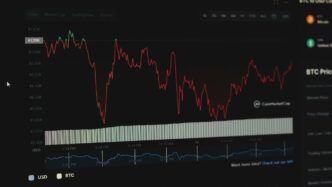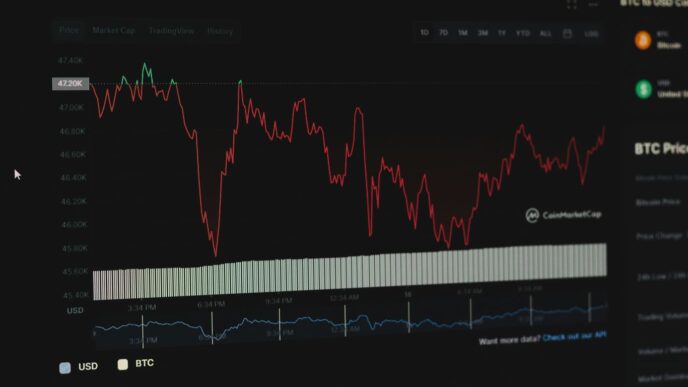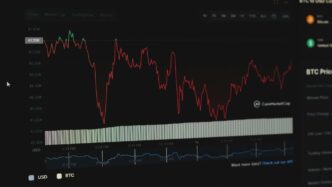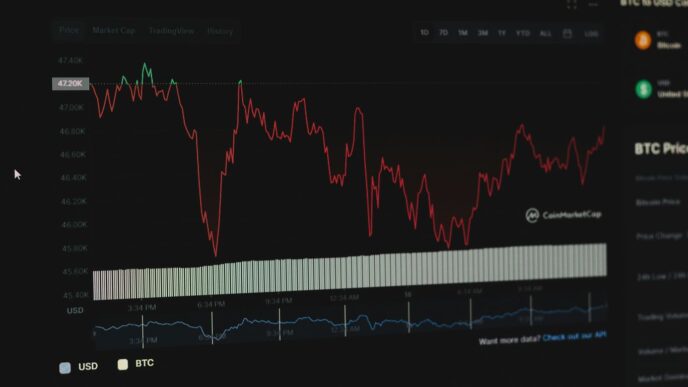If you’re an employer or employee in California, the WARN Act California can seem like a headache, but it’s important to know what it means for you. Basically, this law says companies have to give advance notice before big layoffs, plant closures, or moving a business. There are a lot of rules, some exceptions, and the penalties for messing up can be steep. This guide breaks down the main points, clears up the differences between the federal and state versions, and gives you some tips to avoid trouble in 2025.
Key Takeaways
- California’s WARN Act covers more businesses than the federal law, starting at 75 employees instead of 100.
- Employers have to give a 60-day written notice before mass layoffs, plant closures, or relocations in California.
- Not every layoff triggers the WARN Act—temporary layoffs or those caused by natural disasters may be exceptions.
- Failing to follow the WARN Act California can lead to big financial penalties and damage to a company’s reputation.
- Staying up to date on the WARN Act California and getting legal advice can help businesses avoid costly mistakes.
Key Differences Between Federal and California WARN Act

Employers in California often find the state’s WARN Act rules stricter and a bit more complicated compared to the federal version. If you’re running a business here or even just managing HR, knowing what sets these two apart matters. Compliance comes down to understanding exactly which law covers your workforce and when. Let’s break down the details so you don’t get caught off guard.
Employee Thresholds and Coverage
One of the biggest things you’ll notice? The size cutoff for who has to follow the rules is not the same. Here’s how they compare:
| Feature | California WARN Act | Federal WARN Act |
|---|---|---|
| Employee Threshold | 75 or more | 100 or more |
| Applies To | Single site in California | Nationwide |
A company with just 75 employees at one site in California is already counted in—while the federal act only steps in at 100. This lower threshold catches smaller California employers, especially in tech or manufacturing, who might have assumed only bigger firms worry about WARN.
Key points:
- California’s law covers more businesses with its lower threshold.
- Both count full-time and part-time staff.
- Companies operating in multiple states may fall under both laws at different locations or times (Legal compliance in information technology).
Notice Period Requirements
Both laws generally require advance notice before big layoffs or closures, but not always for the same reasons or with the same timing:
- California WARN: A strict 60 days written notice before a layoff, plant closure, or relocation.
- Federal WARN: Also 60 days for most layoffs or closures, but 90 days in some rare relocation cases. Some exceptions let the federal notice be shorter, but California law doesn’t let you off the hook as easily.
If you’re thinking about letting people go or moving your operation, you can’t wait until the last minute. The 60-day notice is more of a hard rule in California.
Partial Plant Closure Provisions
Here’s another spot where California adds its own twist. The state law steps in even for a partial closure. If you’re shutting down part of your facility and letting go of at least 50 employees in 30 days—even if you’re not closing the whole workplace—California WARN applies.
The federal WARN Act, on the other hand, doesn’t care about partial closures unless certain larger numbers are met:
- At least 500 employees, or
- 50 employees and at least a third of the workforce affected.
List of scenarios that trigger extra caution in California:
- Closing one department or unit (not the whole business) with 50+ job losses.
- Relocating jobs out of the local area, even if other work continues.
- Layoffs that impact multiple groups or job types at the same site.
Keeping track of both laws and their differences can be tricky, but it’s important if you want to avoid surprises or penalties. Employers should regularly review their headcount and strategy, especially if downsizing or moving work out of state is being considered.
Covered Establishments and Employer Obligations Under WARN Act California
Let’s face it, figuring out when the California WARN Act applies can feel pretty overwhelming. Laws have a way of making your head spin, but if you’re running a workplace or handling HR, you really need to get these details down. The California WARN Act sets its own rules for who is covered and what employers are expected to do. Here’s what you need to know.
Defining a Covered Establishment
In California, a “covered establishment” usually means a business location—factory, warehouse, call center, you name it—where at least 75 folks have worked (full-time or part-time) at any point in the last 12 months. This includes situations where workers have been employed for at least six months during that time. Even smaller businesses can get swept up in this if they hit the headcount.
| Covered Establishment | Minimum Number of Employees | Employment Duration Requirement |
|---|---|---|
| CA WARN Act | 75 (full or part-time) | Worked at least 6 months in prior year |
- Both full-time and part-time employees count toward this number.
- If there are several locations, the 75-employee rule generally applies per site, not company-wide.
- Temp workers, if directly hired, might also count—so watch out for that.
Industries and Businesses Affected
California’s WARN Act doesn’t just focus on one type of industry. Here’s the deal:
- Retail, manufacturing, tech, and even workers involved with wildfire cleanup and recovery (as protected under state labor laws) can fall under these rules.
- Both public and private employers, as long as they run an industrial or commercial facility, should take a closer look.
- If an establishment is closing or relocating (over 100 miles away), the rules don’t care what kind of widgets you make or services you provide—if you meet the threshold, the Act likely applies.
Employer Responsibilities
Once a business hits that “covered establishment” status, it’s not really a question of “if” but “how” you handle the requirements. Here’s what you’re supposed to do:
- Give a written 60-day advance notice before any covered mass layoff, relocation, or shutdown.
- Notify all affected employees plus:
- The Local Workforce Development Board.
- The chief elected official in each impacted city/county.
- The state’s Employment Development Department (EDD).
- Include clear details in the notice: who’s affected, when changes happen, and what kind of employment loss employees can expect.
If you’re late or miss any of this, it can cost you—potentially up to 60 days of back pay and lost benefits per affected worker. It isn’t enough to simply follow the federal WARN Act; California lays out its own extra steps. Compliance can look nitpicky, but it’s actually a safeguard for both employees and the business down the line.
To sum up, keep a close watch on your headcount, and always check if you’re edging into “covered” territory. Ignoring or misunderstanding your role as a California employer doesn’t end well, so it’s just not worth risking.
Events That Trigger WARN Act California Notification Requirements
When it comes to the California WARN Act, knowing which workplace changes actually require formal notice is everything. If you’re running a business that might be shrinking, moving, or even shutting down, it’s important to get this right. Below, you’ll find the most typical events that set off the notification requirement—and what you should know about each.
Plant Closures and Permanent Shutdowns
If a company decides to permanently shut down a site, even if it’s just one location out of many, that’s a major red flag for the WARN Act. California’s definition of a plant closure is broad—it covers any permanent closure at a covered establishment, regardless of how many employees are affected. This means even smaller teams are protected.
Key details:
- Applies to every kind of workplace (offices, factories, warehouses) as long as it meets the 75-employee threshold.
- Includes part-time and full-time employees who have worked at least six of the last 12 months.
- Temporary shutdowns usually don’t count unless the closure becomes permanent or surpasses the short-term layoff limits (more on that in the exceptions section).
Mass Layoffs and Employee Thresholds
The term “mass layoff” causes a lot of confusion, but the rule is pretty simple in California. If 50 or more employees lose their jobs at a single site within a 30-day window, it’s a trigger, even if your company is much larger or it’s just a fraction of your workforce. Here’s a table to spell it out:
| Event | Minimum Number of Employees Affected | Time Frame |
|---|---|---|
| Plant Closure | Any | N/A |
| Mass Layoff | 50 | 30 days |
| Relocation | Any | N/A (distance) |
A few extras to keep in mind:
- Both full-time and part-time staff are counted.
- It doesn’t matter what roles are being cut—everyone counts toward the 50.
- The layoff must happen within a rolling 30-day period.
- Sometimes, smaller layoffs can add up over a 90-day period, so timing is everything (see integrated business management tips for more).
Relocations and Geographic Scope
One thing that surprises employers a lot: relocating your operation can trigger the WARN Act, too. In California, if you move operations 100 miles or more away, even if you only shift a handful of people, you’ll likely need to send a formal notice.
Key points to remember:
- The 100-mile rule is strict; even a move right over the line can trigger the Act.
- It applies to any number of workers relocated, not just large moves.
- This covers permanent moves—not brief, temporary relocations or remote work setups.
To wrap up, not all workforce changes mean you have to send out WARN notices. But for plant closures, big layoffs, or major moves, California law expects you to give a heads-up with plenty of notice. Double-check your circumstances—missing the mark can get expensive fast.
Required Notice and Delivery Methods for California WARN Act

Getting the notice piece right is probably the most talked-about part when it comes to California’s WARN Act. When a company is staring down a big round of layoffs or a closure, the last thing anyone needs is confusion over who gets the news and how it should be sent out. Let’s break down what California law expects.
Notice Recipients and Content Requirements
Who needs to get this notice? It’s not just the workers losing their jobs. Here’s the basic rundown:
- Each affected employee must get their own written notice.
- The chief elected official of the local government (like the mayor or city council) where the action is happening.
- The Local Workforce Development Board (LWDB) in that area.
- The California Employment Development Department (EDD).
Notices must include these key details:
- Reason for the layoff, closure, or relocation.
- The expected date the action will happen.
- Whether the loss of employment is permanent or temporary, and if it’s temporary, for how long.
- The number and job titles of affected employees.
Approved Delivery Methods
The law gives you a few options for delivering the notice, but you want to make sure it actually reaches folks:
- Direct written notice to every individual employee (hand-delivery, regular mail, or certified mail with a return receipt for proof).
- Posting the notice in obvious spots at the worksite (break rooms, bulletin boards) where employees can easily see it.
- Sending by email if it’s the normal way your employees receive official information (but only if you know people check email reliably).
For elected officials and local boards, mailing or hand-delivering the letter works best. Some people file electronically with EDD, as they list on their website (EDD layoff services).
Here’s a quick table to keep it straight:
| Recipient | Delivery Methods |
|---|---|
| Affected employees | Written notice, email, posting |
| Local government (mayor, council, etc.) | Mail, hand-delivery |
| Local Workforce Development Board | Mail, hand-delivery |
| California EDD | Online filing, mail |
Timelines for Compliance
Complying with California’s timeline is everything here. Employers must issue WARN Act notices at least 60 calendar days before any planned action like a mass layoff, relocation, or closure.
- If you miss the 60-day window, you could face liability for wages and benefits that workers lose because of the late notice.
- The 60-day clock starts ticking from the moment the first employee is let go due to the event, so don’t leave it until the last minute.
- Keep a record of when and how each notice was delivered—this could prevent a lot of headaches later on.
Being upfront with workers, elected officials, and local agencies during these tough moments doesn’t just keep you out of legal trouble—it also helps with transparency and trust. Just don’t forget: no fancy forms needed, just clear, honest info and proof that you sent it on time.
Common Exceptions to the WARN Act California
Not every workforce change in California triggers the WARN Act’s notice rules. Sometimes, companies don’t have to give the 60-day notice if specific conditions are met. Let’s break down the most common exceptions employers and employees should know about in 2025.
Temporary Layoffs and Short-Term Changes
If the planned layoff is truly short-term—no more than six months—it often won’t count under the California WARN Act. For example, a business that shuts down operations for three months due to a seasonal downturn may not need to provide formal WARN notice. Still, situations can get tricky:
- If the company extends a temporary layoff past six months, notice may become legally required.
- When layoffs were never meant to be permanent but evolve into permanent separations, employers might need to act quickly on notification.
- If there’s any realistic chance employees will be called back, document everything to show intent and timelines.
Natural Disaster Exceptions
Some situations are out of everyone’s control. Natural disasters—such as fires, floods, or earthquakes—can shut down workplaces with no warning. In these cases, the California WARN Act allows for an exception to the advance notice requirement:
- Employers must still provide as much notice as possible—even if it’s after the fact.
- Written documentation should explain why the disaster created a closure or layoff event.
- This exception only applies when the sole reason for the closure is the disaster itself.
Closure Due to Business Circumstances
The rules are stricter here than under the federal WARN Act. California doesn’t automatically excuse businesses for sudden economic hardships. However, there are still a few circumstances where advance notice may not be required:
| Situation | Is Notice Exempt? |
|---|---|
| Company closes because of a true act of nature | Usually yes, under natural disaster rules |
| Layoff extended due to business miscalculation | Usually not—notice likely needed |
| Short-term project wraps up as expected | Sometimes, if duration was clear up front |
Keep in mind, as noted in recent updates, laws can shift over time and it’s best to check current regulations and court rulings before finalizing any decisions related to layoffs.
Here’s a summary of the most common exemptions:
- Temporary layoffs or shutdowns lasting six months or less.
- Plant closures or layoffs caused by a natural disaster.
- Very specific business circumstances, but these are rare and require strong legal proof.
When planning any workforce reductions, document the facts, keep employees updated, and check with a legal or HR professional if anything isn’t cut-and-dried. The rules are detailed—and mistakes are easy to make, so staying informed is vital.
Legal Consequences for WARN Act California Violations
When California employers don’t follow the WARN Act, the fallout goes way past a slap on the wrist. These mistakes are expensive, sometimes public, and usually avoidable with good planning. Here are the specifics on what kind of trouble you can get into if you break the rules in 2025.
Financial Penalties and Civil Liability
Failing to comply with the California WARN Act can cost businesses a lot of money very quickly.
Here’s how it breaks down:
- Back Pay: Employees can recover up to 60 days’ worth of back pay, based on their final or three-year average salary, whichever is highest.
- Lost Benefits: You’ll need to cover any benefits that would’ve been provided during that period, including healthcare costs.
- Civil Penalties: The State can fine you $500 per employee, per day, until the violation is corrected.
| Type of Penalty | Description | Possible Amount |
|---|---|---|
| Back Pay | Wages for each missed notice day | Up to 60 days per employee |
| Benefits | Medical and other employee benefits | For up to 60 days |
| Civil Penalty | Daily fine for non-compliance | $500/day/employee |
It doesn’t take long for these numbers to pile up, especially with a big workforce. For legal guidance, reviewing your business structure and liabilities is also important—similar to what’s recommended for legal protection strategies in any online business setting.
Impact on Employee Morale and Reputation
Legal fees and penalties hurt, but the damage to company morale and reputation can linger even longer. Here’s what happens:
- Lower Morale: Sudden layoffs or closures with zero notice make employees lose trust. People start talking, and negativity spreads.
- Media Blowback: WARN Act fines often show up in local news, branding you as an uncaring employer.
- Recruitment Trouble: Word gets out fast, and job seekers may stay away. Retention drops when workers worry about job security.
Legal Action and Enforcement Mechanisms
If you’re found in violation, employees and the State both have paths to force compliance:
- Employee Lawsuits: Workers can sue for back pay, lost benefits, and ask the courts to enforce the WARN Act.
- State Enforcement: The Labor Commissioner can investigate and hand out penalties, including those daily fines discussed earlier.
- Court Orders: In some cases, a judge can issue orders requiring you to pay up quickly or change business practices.
Employers should take these enforcement risks seriously, especially when you’re dealing with compliance requirements in California. A single missed detail can set off a chain reaction of lawsuits, penalties, and negative press.
The bottom line: Not following the California WARN Act leads to fines, lawsuits, and a bad reputation. Stay on top of your legal obligations before making any decisions about layoffs or closures.
Best Practices for WARN Act California Compliance in 2025
Staying compliant with the California WARN Act isn’t something employers can wing at the last minute. It takes attention to details, proactive strategies, and, yes, practical planning. Getting it right not only helps you avoid penalties but also keeps your workplace relationships steadier during tough transitions. Here’s what employers should keep in mind as they head into 2025:
Planning Ahead for Organizational Changes
When you suspect big changes may be on the horizon, waiting until the last minute is risky. With the WARN Act requiring advance notice before layoffs or closures, preparation is everything. Here are some ways to keep ahead:
- Track workforce numbers closely throughout the year to catch when you may cross the 75-employee threshold.
- Map out possible scenarios (closure, mass layoff, relocation) and cross-check these against federal WARN Act requirements as well as California’s.
- Allow for extra time — 60 days is a minimum, not a target. Delays in notice delivery can get expensive fast.
Engaging Legal Counsel and HR Professionals
Let’s be honest: the details of the California WARN Act can be confusing. Misinterpreting who gets notified, how, and when can trigger heavy fines and lawsuits. That’s why:
- Qualified attorneys and HR pros can interpret recent court decisions or new legislation, giving you peace of mind.
- Regularly review where your obligations under California law might differ from the federal requirements, especially if you have locations across multiple states.
- Document every step. Legal counsel can help ensure that your notice letters cover all bases, including extra notifications required by California law.
Staying Informed on Legislative Updates
The legal landscape shifts, sometimes quietly. Even if there haven’t been drastic updates lately, keeping tabs means you aren’t caught off-guard.
- Subscribe to state agency bulletins and employment law digests.
- Ask your HR team to check news from the California Employment Development Department (EDD) every quarter.
- Build relationships with local officials so communication lines are open if you ever need to send official WARN notices.
Here’s a simple table for evaluating your preparedness for compliance each quarter:
| Compliance Area | Reviewed? (Yes/No) | Last Checked | Action Needed |
|---|---|---|---|
| Workforce count analysis | |||
| Notice process mapped | |||
| Legal updates monitored |
Keeping up with these practices can make the process easier and far less stressful. By being proactive, seeking expert help, and staying informed, you reduce risks and help your staff handle transitions as smoothly as possible.
Conclusion
Wrapping things up, the California WARN Act is something both employers and employees should keep on their radar. The rules might seem a bit much at first, but they’re there to help everyone get through tough transitions like layoffs or plant closures with a little more warning and a little less chaos. For employers, following the notice requirements isn’t just about avoiding fines—it’s about treating people fairly and keeping your company’s reputation solid. For employees, knowing your rights means you’re not caught off guard if big changes are coming. Laws can change, so it’s smart to check for updates every now and then or talk to a legal expert if you’re unsure. At the end of the day, a little preparation and clear communication go a long way in making these situations less stressful for everyone involved.
Frequently Asked Questions
What is the California WARN Act and who does it protect?
The California WARN Act is a law that makes sure employees get a warning before big changes like plant closings, mass layoffs, or company moves. It protects workers by giving them at least 60 days’ notice before these events happen, so they have time to find new jobs or make other plans.
Which businesses have to follow the California WARN Act?
Any business in California with 75 or more full-time and part-time workers in the last year must follow the WARN Act rules. This covers many types of companies, including factories, stores, and offices.
What kind of events mean a company has to send a WARN notice?
A company must send a WARN notice if it plans to close a plant for good, lay off 50 or more employees in a 30-day period, or move its business to a new location that is 100 miles or more away.
Are there any times when the WARN Act does not apply?
Yes, there are some exceptions. If the layoff is temporary and expected to last six months or less, if a natural disaster like a fire or flood causes the closure, or if the company closes because of sudden business problems that couldn’t be predicted, the WARN Act might not apply.
What happens if a company does not give the proper WARN notice?
If a company doesn’t give the required notice, it can be forced to pay the employees for up to 60 days of lost wages and benefits. The company might also have to pay extra fines and could face lawsuits from affected workers.
How can companies make sure they follow the California WARN Act in 2025?
To stay compliant, companies should plan ahead when big changes might happen, talk with legal and HR experts, and keep up with any new laws or updates. Giving clear and early warnings to employees and local officials is very important to avoid trouble.














